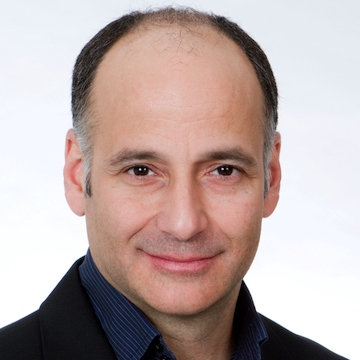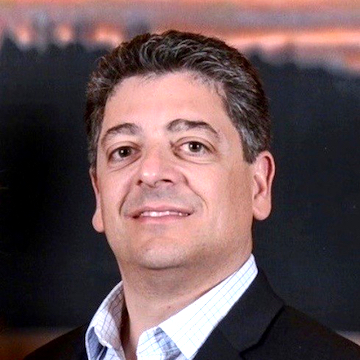
Motion Control Roundtable 2019
By Edited by Mike McLeod
Motion Control Machine BuildingMotion control leaders discuss the market conditions and trends of the Canadian automation market.
 DE: From your point of view, how has the Canadian motion control market performed in the past year?
DE: From your point of view, how has the Canadian motion control market performed in the past year?
Warren Osak, Founder and President, Electromate: I would say steady and consistent. For the last several years, we’ve experienced modest year-over-year growth, but this past year’s growth was a little down. Even so, we haven’t seen the peaks and troughs that are typically associated with a volatile market. The U.S.’s repeal of NAFTA was somewhat unsettling for many Canadian industries but the new USMCA seems to have brought considerable calmness to the manufacturing sector, which has helped boost confidence in the economy and drive CAPEX spending. We’ve also had five interest rates hikes since mid-2017, which helped keep the economy from overheating, but it has also moderated economic activity in the motion control market, last year and this year.
Anthony Morielli, Business Manager Factory Automation, Bosch Rexroth Canada: 2018 was another solid year for the Canadian motion control market. We saw growth in traditional areas like handling and assembly but also emerging sectors like battery assembly for electric vehicles and additive manufacturing. The motion control market in Canada is in a mature state, in that the technology is readily accepted by machine builders and manufacturers. We’ve also seen a trend in the last few years where the number of servo axes per machine has been on the rise as well, based on the need for higher production rates, flexibility and reduced change over times. So far, this year is turning out to be another good year for motion control. You hear about slowdowns in Europe, Asia and even the U.S. but we haven’t seen that in Canada.

“Open source communication and standardized distributed fieldbus protocols have homogenized a once fragmented industry. The interoperability these provide is a huge benefit to customers in all industries. It’s also the primary driver of the fourth industrial revolution. After all, without industry standardization, Industry 4.0 doesn’t exist.”
– Warren Osak, Founder and President, Electromate
Calvin Wallace, Managing Director, Beckhoff Canada: Very well. We see the market as strong and growing. The percentage of machines that utilize some form of servo control system is increasing. We’re also seeing an increase in the axes count per machine, ranging from 25 to more than 100 axes per automation controller. The industry knows a lot more about servo motion control than 20 years ago. The technology is easier to integrate and the price point has come down to where it’s easier to adopt. So there is very little reluctance to use more servo motion control in the machinery being built. This year, the first quarter has been strong with a bit of a slowdown in the second. Last month was a good recovery though, and we’re pretty bold for the rest of the year.
Doug Newton, VP of Marketing, Advanced Motion & Controls: We’ve seen moderate growth in the past year with projected growth that’s stable but optimistic for 2020. As an organization, we are still seeing some of the macro effects of the global trade issues. We do feel that tariffs have taken a bit of a toll as costs, in general did Increase.
DE: Which products or product categories are most popular currently?
Osak – Electromate: The one product trend that is really hot right now is the adoption of planetary roller screws in linear actuator applications. Primarily, that’s because they allow engineers to specify electric actuators in applications that were previously the sole domain of hydraulic cylinders. They are designed with a fine screw pitch that provides more points of contact and a larger contact radius resulting in less stress per point of contact. As a result, they offer very high force transmission capability, operate at high speeds, are long-lasting and require little maintenance. The adoption rate has been a little slow, but as we saw with electric rod-style actuators replacing pneumatic solutions, it will take some time. The unit cost is currently higher compared to hydraulics but looking at their lower total cost of ownership, eventually planetary roller screw linear actuators will become the preferred solution.
Morielli – Bosch Rexroth: Any technologies that reduce costs, increase productivity and/or reduce energy consumption are in high demand. For example, some automation systems are still running after 20 years but Canadian manufacturers are operating at full capacity and can’t afford any unexpected breakdowns. As systems age, they become more expensive to repair. So we offer a range of scalable solutions to extend machine life while reducing risks during the changeover. In many cases, we offer the ability to replace the controls, for example, but leave the drives and motors intact, which can be replaced later. For machine builders, one of our hot products is our cabinet-free integrated servo drives that eliminate the need for a power supply in the cabinet. The power supply has its own enclosure mounted directly on the machine and the integrated drive/motors require only a single cable to daisy chain between them.

“So far, this year is turning out to be another good year for motion control. You hear about slowdowns in Europe, Asia and even the U.S. but we haven’t seen that in Canada.”
–Anthony Morielli, Business Manager Factory Automation, Bosch Rexroth Canada
Wallace – Beckhoff: The AX8000 modular servo drive system has been a good success for us, but the EL7200 series compact servo drive business continues to grow well. The drives are only 12 to 24mm wide, integrated directly into the DIN rail mounted I/O system, are less expensive and the power distribution is simpler. Basically, servo drive performance at stepper drive prices. In the past, servos were too expensive to use to have a packaging machine automatically reconfigure for a product changeover so they had manual ways of setting the machine up. These servo drives and motors allow for more flexible machine designs overall. The other area that is probably the most exciting is in our mechatronics product category. This includes our eXtended Transport System (XTS) and the new magnetic levitation XPlanar system. They are a fully programmable and flexible transport systems that move products around a machine or plant and users are always looking for better ways to do that.
Newton – Advanced Motion: For us, robotics is highly in demand right now as is automation in general; basically, any technology that increases throughput has been very popular. That seems to be driven primarily by labor shortages and the general competitiveness of the marketplace. Also, to a certain extent, the government’s tax incentives, put forth nearly a year ago, helped stimulate some capital expenditures within our marketplace.
DE: What business trends do you see taking root in the industry?
Osak – Electromate: New universally accepted safety standards are coming online in Europe and that technology is now migrating to North American control manufacturers. So we are going to see those standards integrated into servo drives and motion controllers soon. In addition, open source communication and standardized distributed fieldbus protocols have homogenized a once fragmented industry. The interoperability these provide is a huge benefit to customers in all industries. It’s also the primary driver of the fourth industrial revolution. After all, without industry standardization, Industry 4.0 doesn’t exist.
Morielli – Bosch Rexroth: We’re seeing requirements for out-of-the-box electro-mechanical systems. So we offer Cartesian systems with two or three axes for pick-n-place. Now, however, they’re fully assembled based on customer requirements and are factory tested with performance metrics, like position tolerance and cycle times, certified by the factory with pre-programmed controls. Another example is the smart press fit system – an electromechanical cylinder with a servo motor, drive and a sensor for pressing applications. Again, it’s a pre-programmed, out-of-the-box system, aimed at replacing pneumatic and hydraulic-based systems. Customers are also asking for completely assembled conveyors along with controls, PLC and HMI specifically for that conveyor. Machine builders are looking to off-load anything that can be provided by suppliers.

“A big trend is the ability to combine the functionality of two or three different cells into one. End users want to be able to integrate all their independent machines into a complete system, which allows them to build smaller, faster and more flexible machines.”
– Calvin Wallace, Managing Director, Beckhoff Canada
Wallace – Beckhoff: A big trend is the ability to combine the functionality of two or three different cells into one. End users want to be able to integrate all their independent machines into a complete system, which allows them to build smaller, faster and more flexible machines. It also enables complete traceability within that process, eliminating the need to repeatedly reposition and identify the product as it goes from one station to the next. With intelligent transport systems like the XTS, because they’re very precise and 100 percent programmable, they allow end users to run many different variants of a product through a single machine. Of course, floor space is always important at the end user level, as well, especially for clean room and medical assembly applications. With intelligent transport systems, you can handle so many more processes around this track, which can significantly reduce floor space.
Newton – Advanced Motion: One of the biggest trends we’re seeing is that IIoT is becoming mainstream; customers are asking for it. Manufactures are launching more products and we are certainly selling more product with those capabilities built in. For us, that’s opened up new opportunities and applications.
DE: As the need for engineering talent increases, how does your company attract/develop/retain employees?
Osak – Electromate: Often times, companies in our space look at whether we have the best technology, price or delivery as our competitive advantage. However, only one company can be the best in any one category. In the past, one area that we overlooked was the tapping of our human capital as a competitive advantage. So, in 2014, I became engrossed in researching how to improve that, specifically how company culture improves growth, productivity and so on. In 2015, we launched a major culture initiative at Electromate to drive employee recruitment, satisfaction, retention and engagement. Three short years later, the results were pronounced. In April 2018, we were recognized as the 26th best place to work in Canada for companies less than 100 employees and this past April we were ranked the 35th best Canadian workplaces. Electromate also budgets 1 percent of our annual gross sales on training, which is far more than any other company in our space. Altogether, it’s really helped attract new engineering talent which has fueled our ongoing growth.
Morielli – Bosch Rexroth: One of the areas we’ve been focusing on in the last few years is recruiting graduates from colleges and universities with our junior development associate program. They participate in an 18-24 month program rotating between technical sales, engineering and operational departments. We expose them to what the industry looks like, give them a big picture view of the company and provide a chance to form networking connections. We also get involved early on with capstone projects at the university level, providing technology and technical support. For existing associates, we take a multi-faceted approach to development. We have self-learning online tools, internal training programs for technical and soft skills as well as factory experts giving product updates and training. We also support associates who want to continue their education at a college or university if it’s relevant to their work. Associates also have the opportunity to work anywhere in the overall Bosch organization.

“For us, robotics is highly in demand right now as is automation in general; basically, any technology that increases throughput has been very popular. That seems to be driven primarily by labor shortages and the general competitiveness of the marketplace.”
– Doug Newton, VP of Marketing, Advanced Motion & Controls
Wallace – Beckhoff: What we see is that, as experienced engineers learn about Beckhoff and the new automation technology we have and bring out consistently, they come to us looking to part of an innovative company. The last applications engineer I hired was exactly that. He had experience with our product and just wanted to be part of that. I think we’re at a point where we have some critical mass in that area. We also continue to work closely with technical colleges, especially in Ontario, Quebec and B.C. They are starting to do research, like the universities have for many years, and we’ve always been very strong with university research. That’s due, in part, to our powerful software package, TwinCAT 3. It lets machine builders program in familiar languages but also supports the more advanced programming languages that researchers need to solve unique and complex problems that a traditional PLC couldn’t handle.
Newton – Advanced Motion: One of the pillars of our organization is people, so we invest heavily in training, to ensure we give the person the career they desire. That includes internal, supplier training but also career-based training. So, it’s general technology training rather than about specific product. As a result, we want our people to invest in Advanced Motion & Controls Ltd for the long term, ensuring career self satisfaction.
